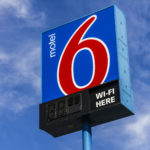Uber cars can continue to be a growing presence on the streets of New York City now that an agreement has been reached between the ride-hailing company and the city.
Just before a City Council vote that could have capped the number of cars Uber can have on city streets, New York Mayor Bill de Blasio’s administration announced late Wednesday that Uber agreed to a four-month study on the impact of the cars on the city’s traffic and the environment.
The agreement contrasts sharply with the legislation the council was set to vote on Thursday, which called for a 1 percent cap on the San Francisco-based company’s growth within New York City during a yearlong study. Uber has steadfastly opposed any cap, and the company and City Hall had traded increasingly nasty barbs over the past week.
Under the deal, the city will not cap Uber’s growth during those four months. Gov. Andrew Cuomo and a growing number of public officials who had been calling for the council to delay the vote, instead cheered the agreement. City Council Speaker Melissa Mark-Viverito announced that the study will be passed but no longer carry a cap.
The surprise arrangement also included a commitment to turn over far more data to the city on the location and duration of its rides. The company also agreed to discuss working toward making more of its vehicles handicap-accessible and contributing to the region’s mass transit network.
“The city received a willingness on the company’s part to make sure there was no effort to flood the market with dramatically increased rates of growth,” said First Deputy Mayor Tony Shorris, who is in charge at City Hall as de Blasio returns from a conference at the Vatican. “The company eventually agreed to what we’ve been asking for a while.”
“We are pleased new drivers will continue to be free to join the for-hire industry and partner with Uber,” Josh Mohrer, Uber NYC’s general manager, said in a statement. “Together, we can build an even better, more reliable transportation system.”
The $40 billion company has become a dominant force on the streets of New York, dispatching 25,000 cars — up from under 100 just four years ago — compared to 13,000 of the city’s iconic yellow taxis.
Uber rider Kryzsztof Anton of Queens said he was pleased the two sides reached at least a temporary halt on the city’s plan. The Long Island City resident said he has been riding in taxis in New York for more than a decade and now always chooses Uber.
He said Uber travel is a more comfortable experience and believes the drivers are more courteous and polite because they are being rated by the customer.
“It’s a completely different experience,” he said. “I’m a big fan.”
In pushing for a cap, the de Blasio administration cited concern over increased congestion on Manhattan’s clogged streets. When talks broke down last week, sniping between City Hall and Uber reached a frenzy with the ride-hailing service launching an expensive TV ad campaign that depicted the mayor as too influenced by the yellow taxi industry, which ranks among his biggest donors.
Associated Press writers Michael Balsamo and Deepti Hajela contributed to this report.
Related:
- Dispute Simmering Between Uber, de Blasio Over Access to NYC Streets
- NYC Taxi Regulator Sides With Uber in Employee vs. Contractor Debate
- NYC’s Taxi Regulatory Agency OKs New App Rules for Uber, Lyft
- RIMS Report: Uber Touts Ridesharing Insurance Solution
Topics New York Sharing Economy Ridesharing
Was this article valuable?
Here are more articles you may enjoy.


 Howden US Tells Judge Brown & Brown Employees Fled Due to ‘Mistreatment’
Howden US Tells Judge Brown & Brown Employees Fled Due to ‘Mistreatment’  Fire Damages Portland, Maine’s Historic Waterfront
Fire Damages Portland, Maine’s Historic Waterfront  Longtime Motel 6 Spokesman Tom Bodett Settles Lawsuit Against Chain
Longtime Motel 6 Spokesman Tom Bodett Settles Lawsuit Against Chain  FBI Involved After Two Florida Injury Lawyers Go Missing From Fishing Trip
FBI Involved After Two Florida Injury Lawyers Go Missing From Fishing Trip 

